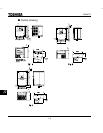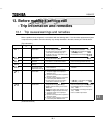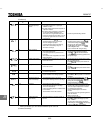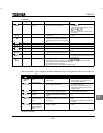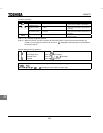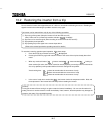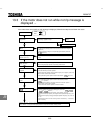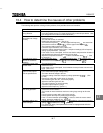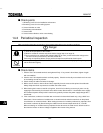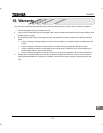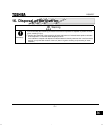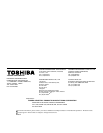
E6580757
N-3
14
(Note) Before an insulation test, always disconnect all cables from the main circuit terminal board
and test the inverter separately from other equipment.
500V insulation tester
(megger)
7. Never test the inverter for pressure. A pressure test may cause damage to its components.
8. Voltage and temperature check
Recommended voltmeter:
Input side ... Moving-iron type voltmeter (
)
Output side ... Rectifier type voltmeter ( )
It will be very helpful for detecting a defect if you always measure and record the ambient temperature
before, during and after the operation.
■ Replacement of expendable parts
The inverter is composed of a large number of electronic parts including semiconductor devices. The fol-
lowing parts deteriorate with the passage of time because of their composition or physical properties. The
use of aged or deteriorated parts leads to degradation in the performance or a breakdown of the inverter. To
avoid such trouble, the inverter should be checked periodically.
Note) Generally, the life of a part depends on the ambient temperature and the conditions of use. The life
spans listed below are applicable to parts when used under normal environmental conditions.
1) Cooling fan
The fan, which cools down heat-generating parts, has a service life of about 30,000 hours (about 2 or 3
years of continuous operation). The fan also needs to be replaced if it makes a noise or vibrates ab-
normally.
2) Smoothing capacitor
The smoothing aluminum electrolytic capacitor in the main circuit DC section degrades in performance
because of ripple currents, etc. It becomes necessary to replace the capacitor after it is used for about
5 years under normal conditions. If your inverter is intended for a 3.7kW or smaller motor, replace the
smoothing capacitor together with the printed circuit board on which it is mounted.
<Criteria for appearance check>
• Absence of liquid leak
• Safety valve in the depressed position
• Measurement of electrostatic capacitance and insulation resistance



